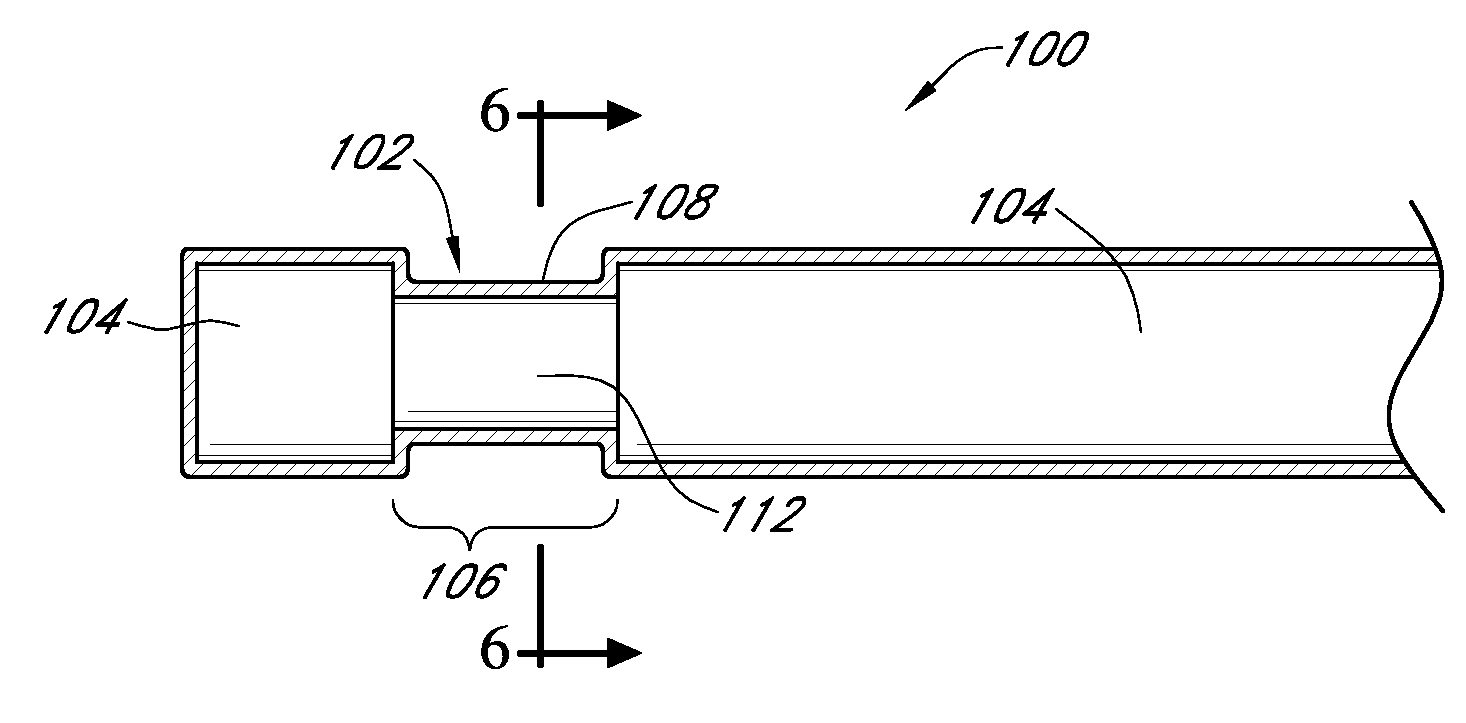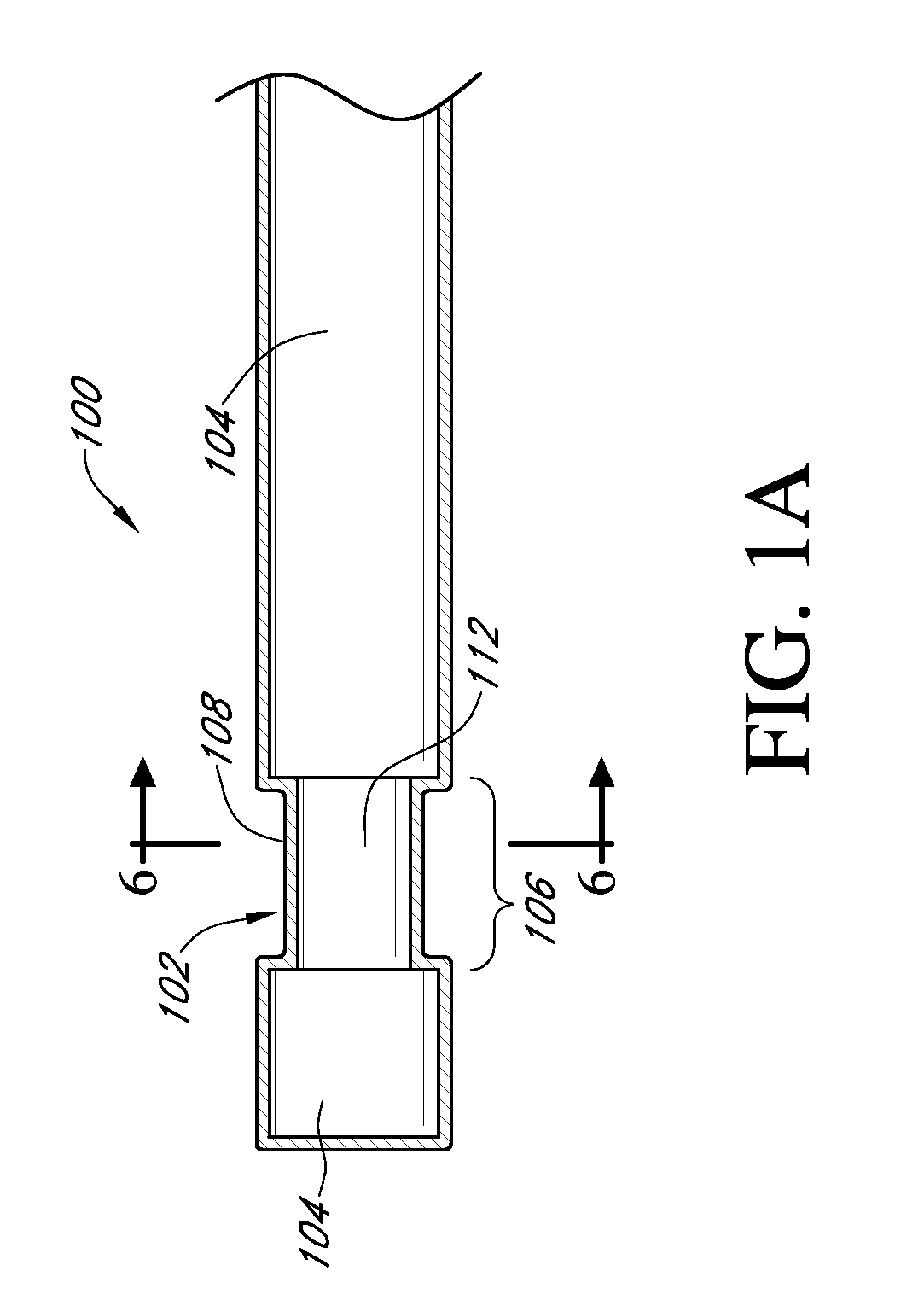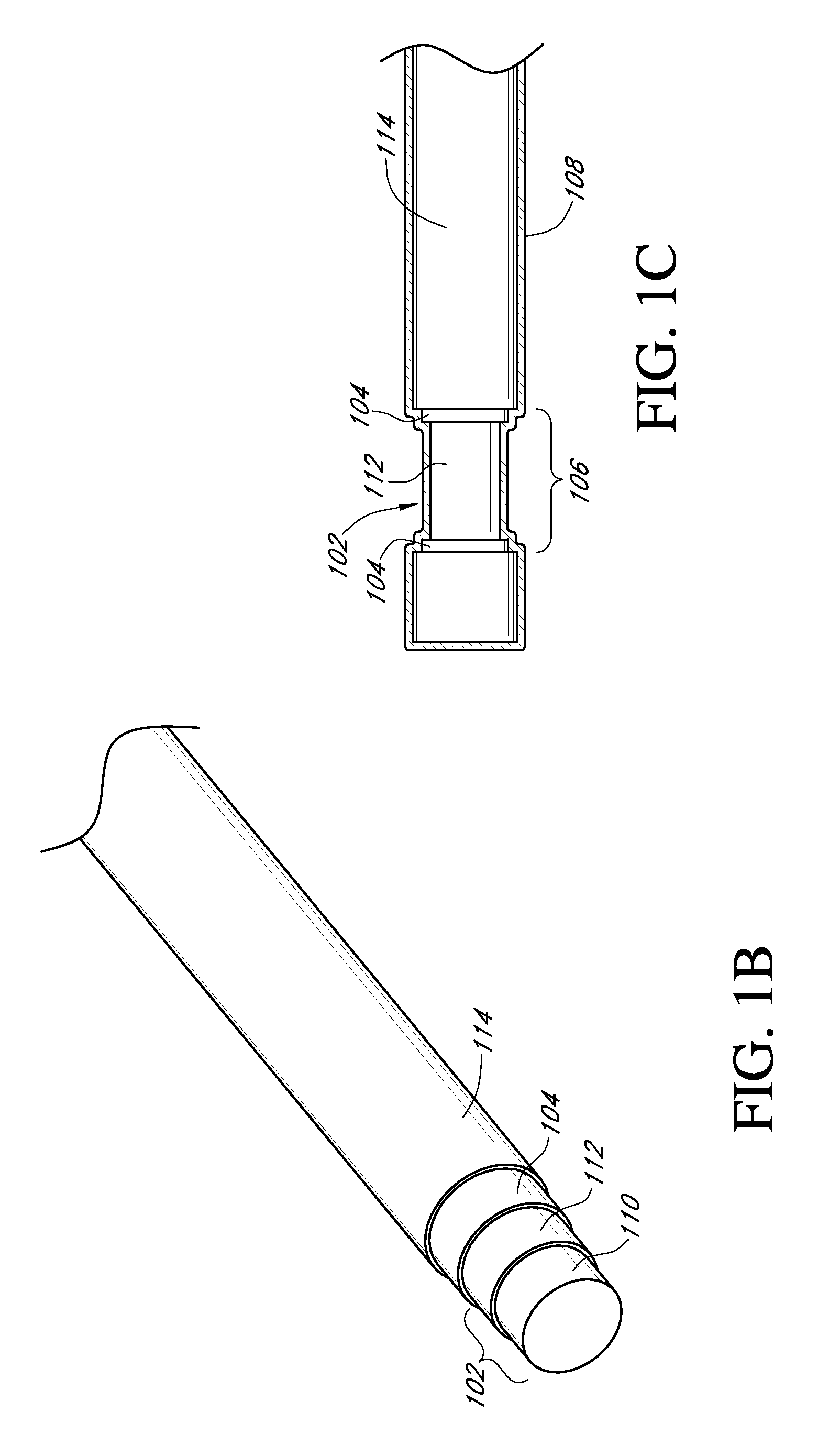Analyte sensors and methods of manufacturing same
analyte sensor and manufacturing method technology, applied in the field of analyte sensor and manufacturing method, can solve the problems of diabetics still not knowing whether their blood glucose value is increasing or decreasing based on conventional methods, many implantable glucose sensors often suffer from complications within the body, and can cause dangerous side effects
- Summary
- Abstract
- Description
- Claims
- Application Information
AI Technical Summary
Benefits of technology
Problems solved by technology
Method used
Image
Examples
example
[0551]Test sensors were designed and fabricated with selection of certain materials, processing, and structure that improve fatigue life, and yet also improve comfort for the user. During the fabrication process, an elongated conductive body is first built by inserting / slip fitting a rod or wire into a tube formed of a conductive material, the combination of which forms an initial structure of an elongated conductive body. The resulting elongated conductive body is then passed through a series of dies to draw down the diameter of the elongated conductive body from a large diameter to a small diameter. With each pass through the die, the cross-sectional profile of the elongated conductive body is compressed, and the diameter associated therewith is reduced. Between passes through the die, an annealing step is performed to cause changes in the mechanical and structural properties of the elongated conductive body, and to relieve internal stresses, refine the structure by making it more...
PUM
 Login to View More
Login to View More Abstract
Description
Claims
Application Information
 Login to View More
Login to View More - R&D
- Intellectual Property
- Life Sciences
- Materials
- Tech Scout
- Unparalleled Data Quality
- Higher Quality Content
- 60% Fewer Hallucinations
Browse by: Latest US Patents, China's latest patents, Technical Efficacy Thesaurus, Application Domain, Technology Topic, Popular Technical Reports.
© 2025 PatSnap. All rights reserved.Legal|Privacy policy|Modern Slavery Act Transparency Statement|Sitemap|About US| Contact US: help@patsnap.com



